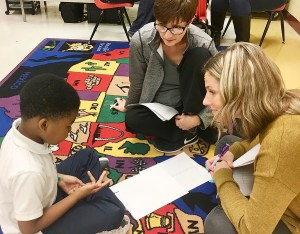
Classroom observations were once a part of my Cognitively Guided Instruction (CGI) Teacher Professional Development (PD) sessions. I loved bringing teachers to an expert CGI teacher’s classroom so that they could watch a math lesson. The teachers told me that they loved seeing these lessons. Although everyone loved these visits, I started to wonder what teachers were actually learning from these observations.
Teaching is a complex problem-solving endeavor. We know that watching other people solve problems isn’t the best way to become a better problem solver and we structure our math classes to ensure that students are solving problems and explaining their thinking when they share their strategies with each other. When teachers observe another teacher teach a lesson, they aren’t engaged in solving problems and don’t have access to the thinking behind the teacher’s actions. I knew that having students watch someone else solve math problems wasn’t a good way to help them become better mathematical problem solvers. Why did I think that teachers watching someone else teach was a good way for them to become better teachers?
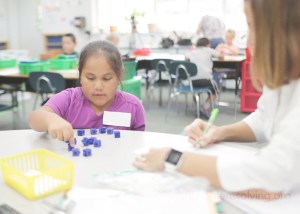
About 13 years ago, my CGI colleagues and I developed the Classroom Embedded Protocol as a way to engage teachers in solving the problems of teaching math in the context of a real classroom. Although this protocol includes teachers observing another teacher, we spend the majority of the day actively engaged in solving the problems of teaching in the context of a real classroom.
Each Classroom Embedded Day is designed to support teachers’ understanding of children’s thinking around a particular mathematical concept. Teachers learn CGI research frameworks about this concept in seminar-style PD before the Classroom Embedded Day. These frameworks include problem types to engage students with a specific concept and the trajectory of strategies that students use to solve these problems. Our Classroom Embedded Days typically work through these seven steps:
1. Assessment.We begin by interviewing all of students in the host classroom to assess each student’s level of understanding of the concept. Teachers analyze the data from the interviews to develop a classroom profile that describes where each student falls along the CGI learning trajectory for this particular concept.
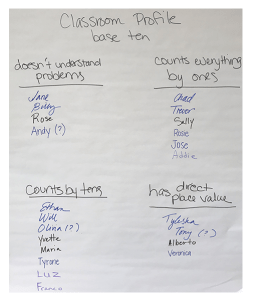
2. Set learning goals. Teachers use the classroom profile, their understanding of CGI learning trajectories, and State Math Standards to set learning goals for these students. Students will engage with these learning goals for several weeks or months; they are not goals to be mastered in one lesson. There are usually different learning goals for different groups of students.
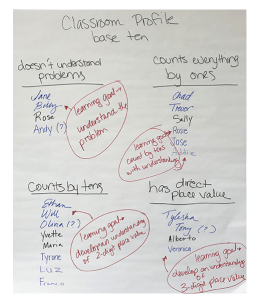
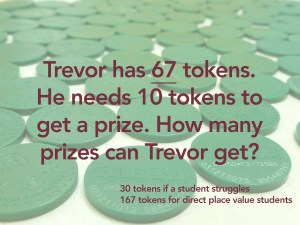
3. Design a problem. Teachers use the classroom profile along with their understanding of a CGI problem types to design a problem for the lesson. We support teachers to choose specific numbers for the problem that will engage students with their learning goals. Sometimes different students need different numbers in their problems.
4. Plan the sharing of strategies. Teachers anticipate how these students will solve the problem and choose which strategies will be shared with the whole class based on which strategies are most likely to support groups of students to engage with their learning goals.
5. Lesson Observation. Teachers return to the host classroom and observe the classroom teacher or the CGI PD leader teach the lesson.
6. Debrief. When debriefing the lesson, we focus on how students engaged with their learning goals. Teachers also reflect on teacher moves that worked well and teacher moves that didn’t work so well. Because teachers have been engaged in the problem solving around the lesson, they can better understand the teacher moves.
7. Plan a lesson for their students. Teachers have already posed a problem or two from the interview to their own students. They work with teachers at their grade level to plan a lesson for their own students using a protocol similar to the one the used for the host classroom.
This process takes about 5-6 hours. We know that teachers will never have this much time to spend on a single lesson in the real world of teaching. We slow down the problem solving process to increase teachers’ understanding and problem solving capacities much like an athlete or musician might slow down a process to increase their skill.
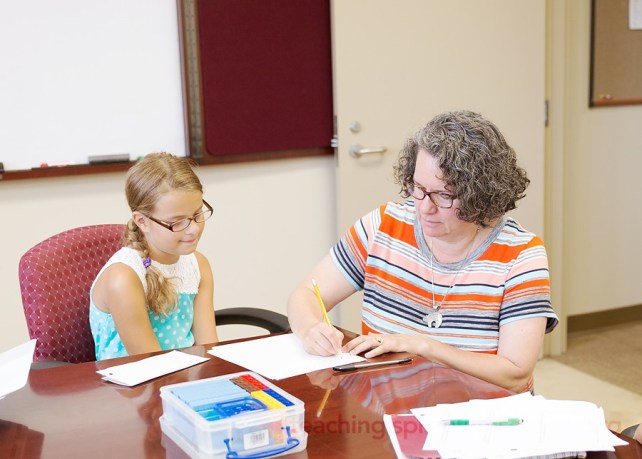
Teaching is a complex problem-solving endeavor. We should adhere to the same principles when teaching teachers as we use for teaching mathematical problem solving. Assessing students’ thinking, setting learning goals, choosing problems, anticipating students’ strategies, and planning the sharing of strategies are complex problem solving endeavors that US teachers almost always do on their own. Our Classroom Embedded Days are designed so that teachers can work together to develop their knowledge, strategies and skills for solving these complex problems.
Teachers typically report that they learn more from a Classroom Embedded Day than they learn from solely observing another teacher teach. Are you someone who has participated in a CGI Classroom Embedded Day? If so, please comment below or tag us on Twitter – @LLeviCGIMath and @teachingsolves with the hashtag #tips_blog on what you learned from this process.
